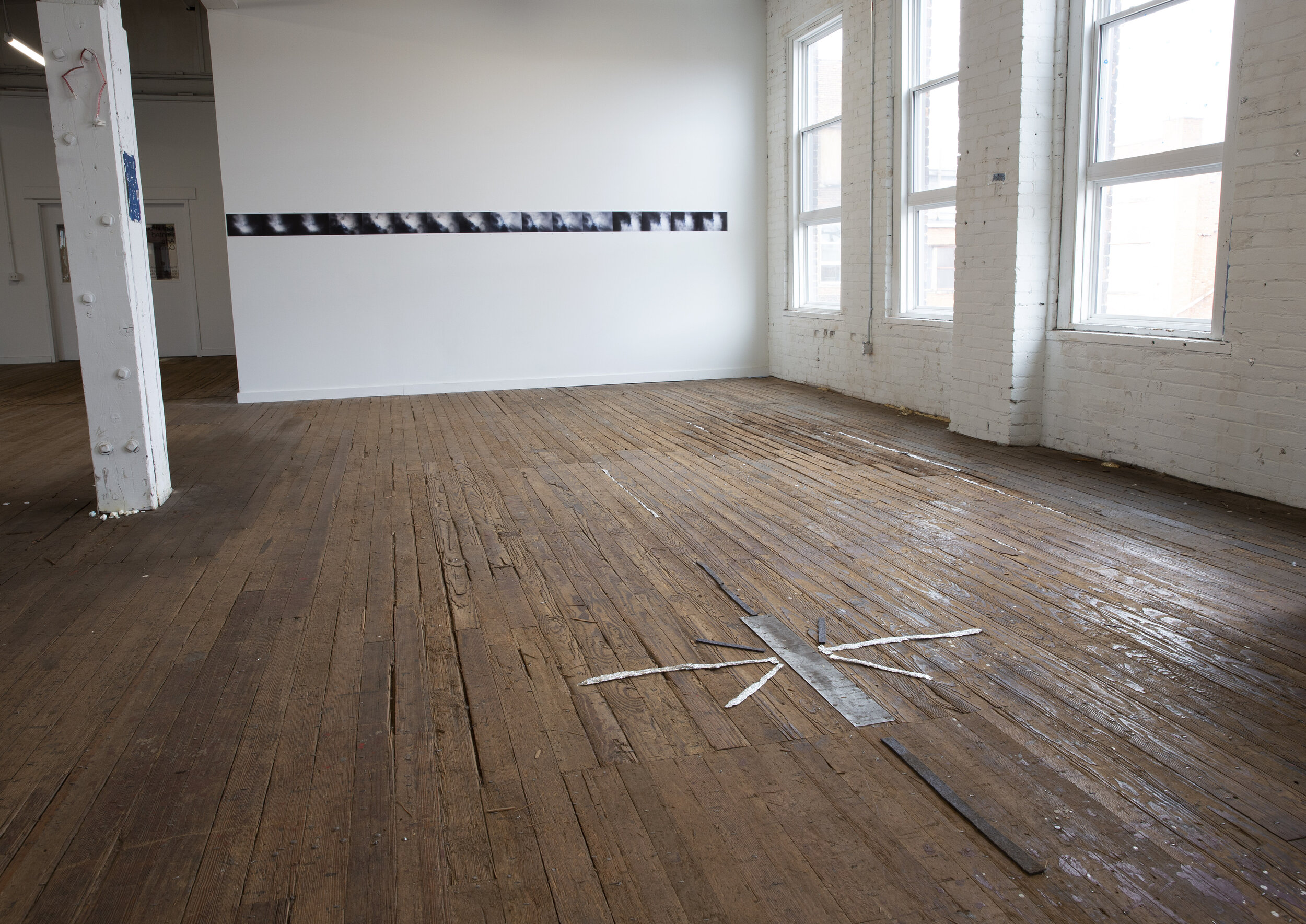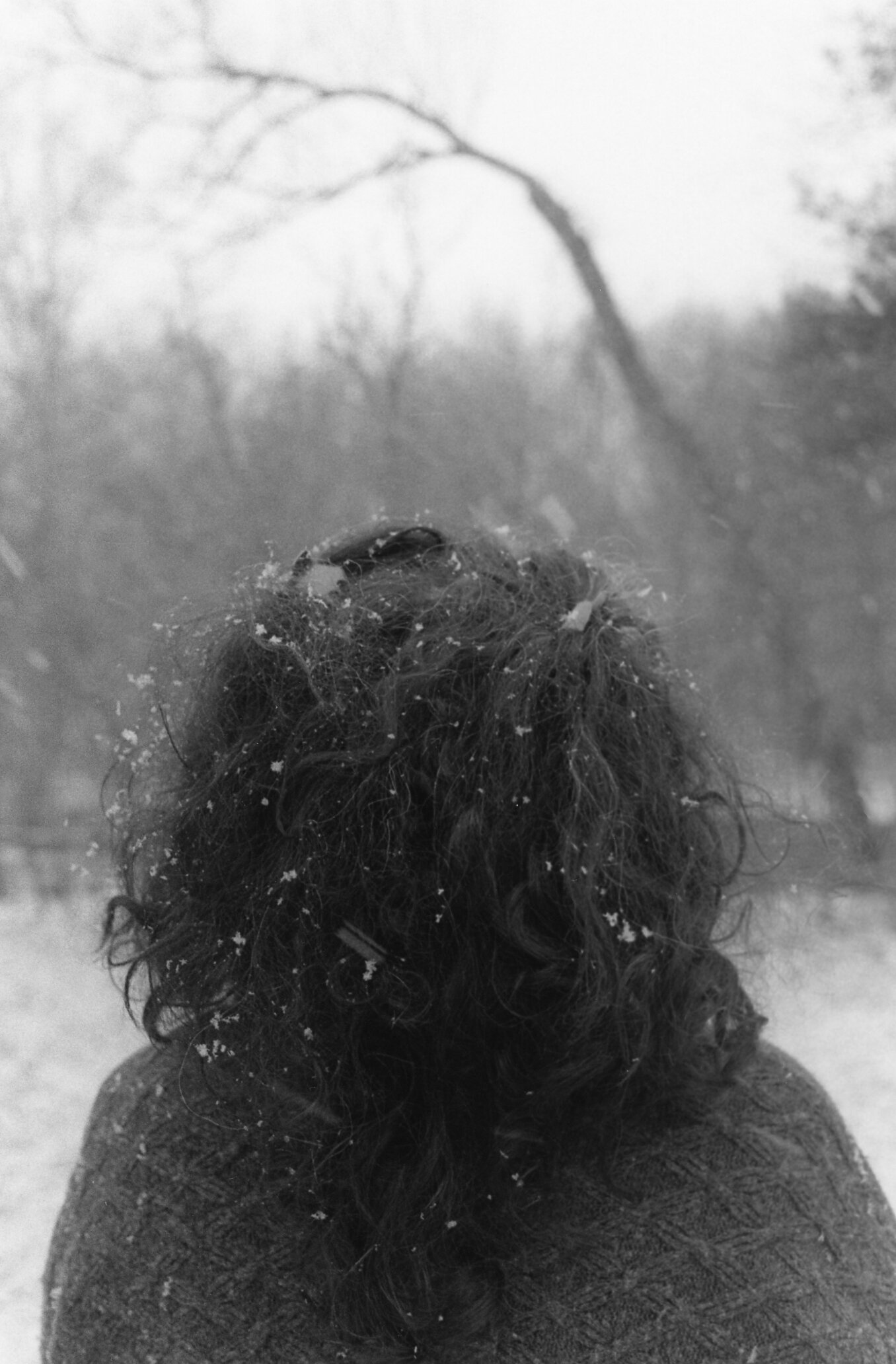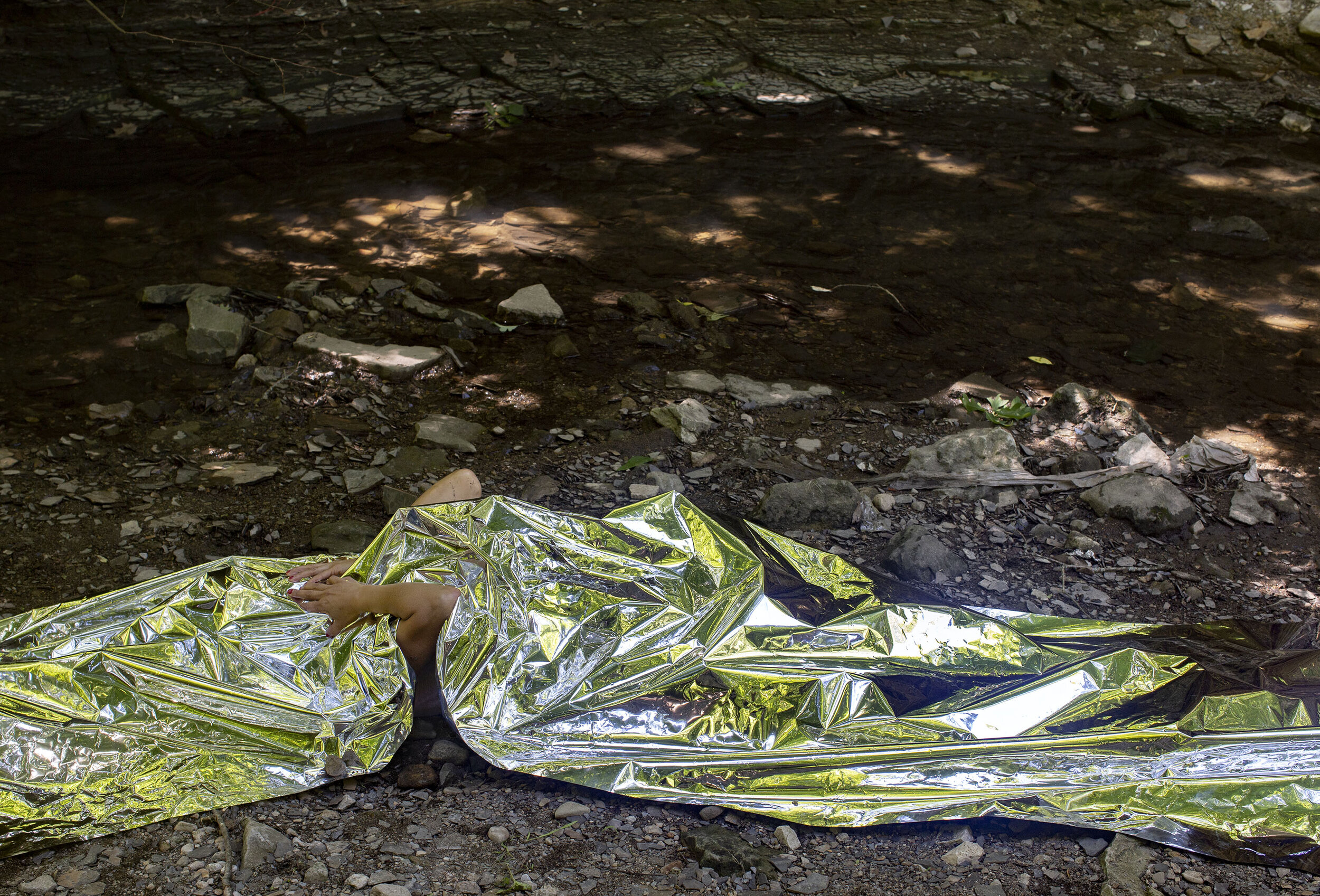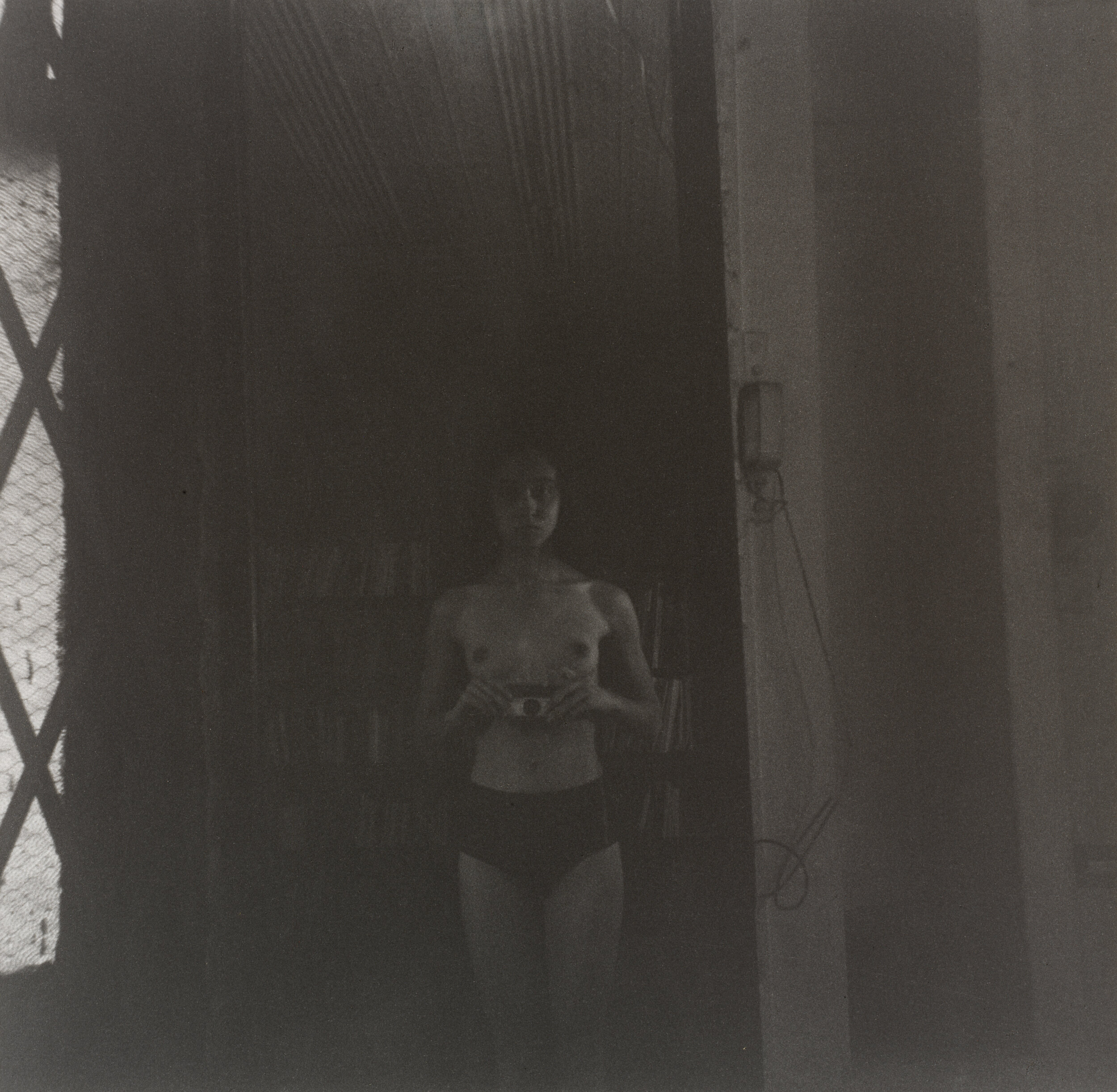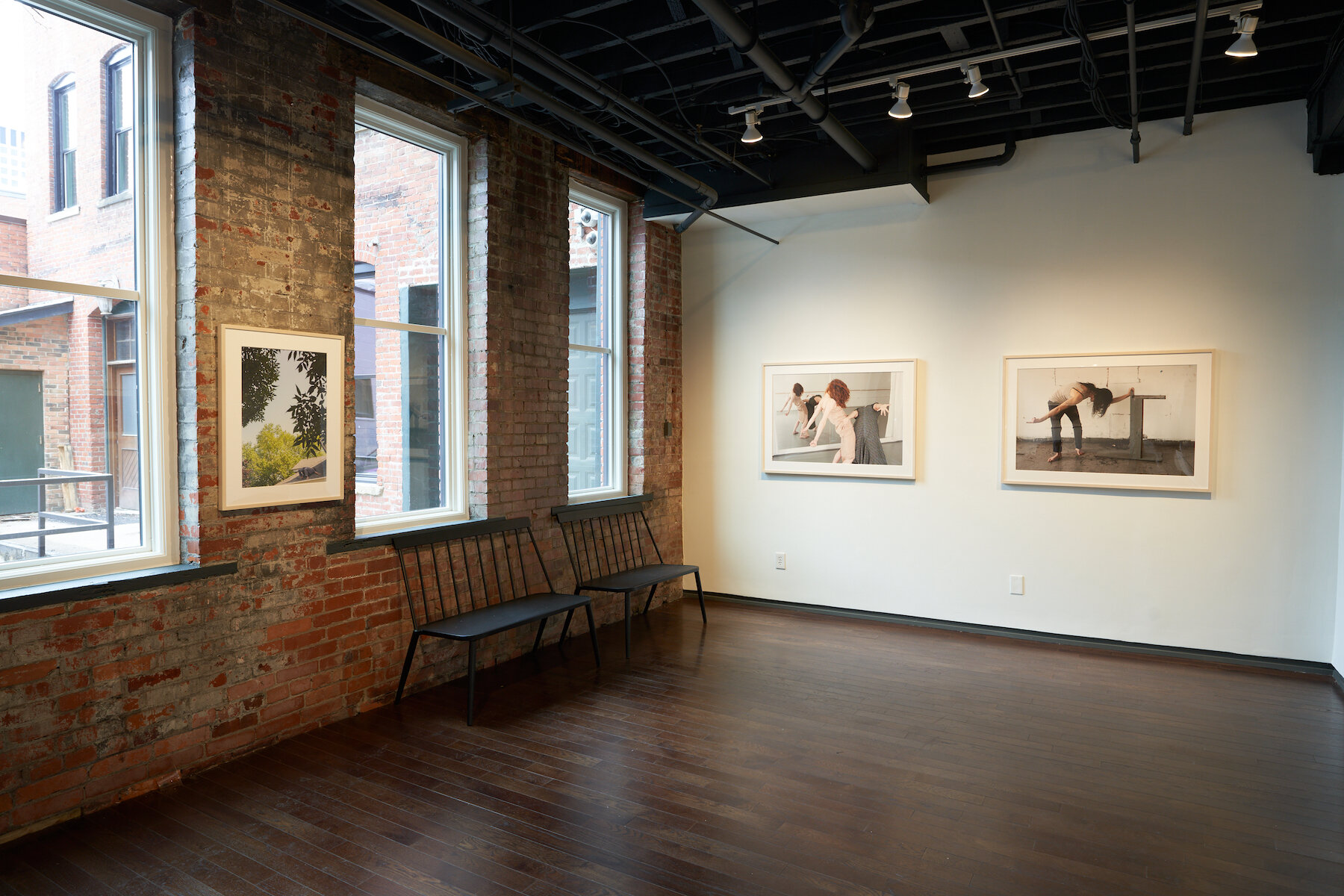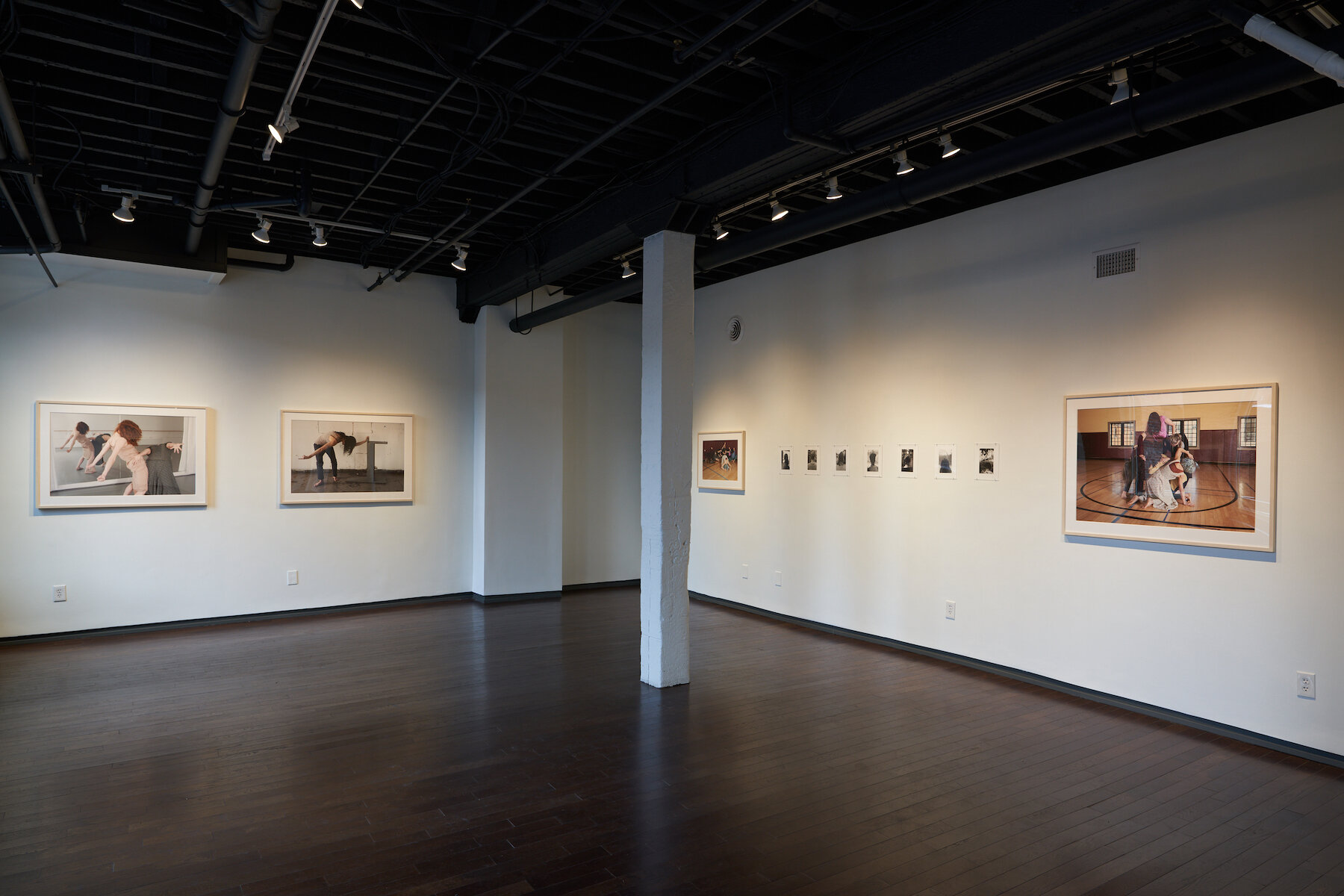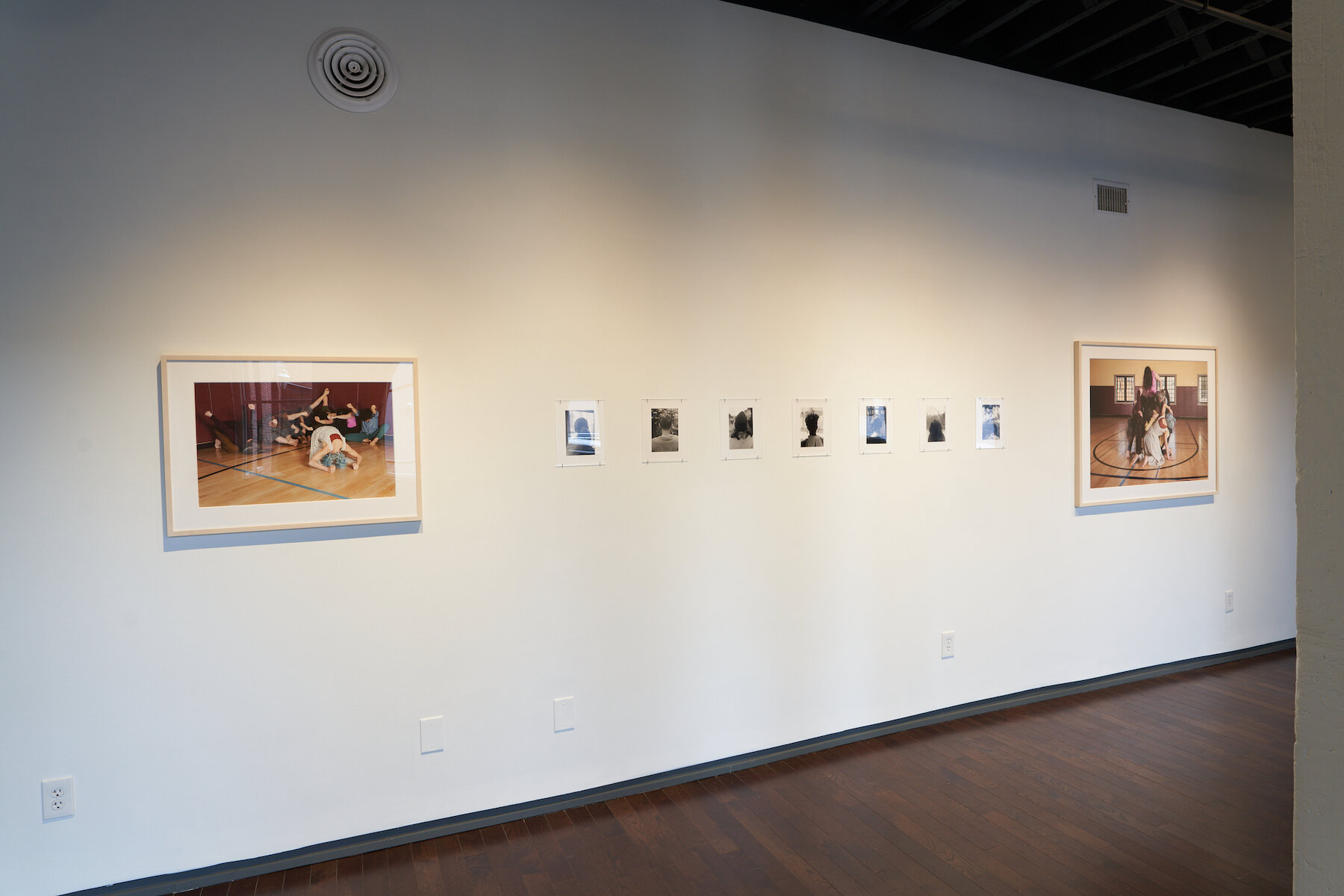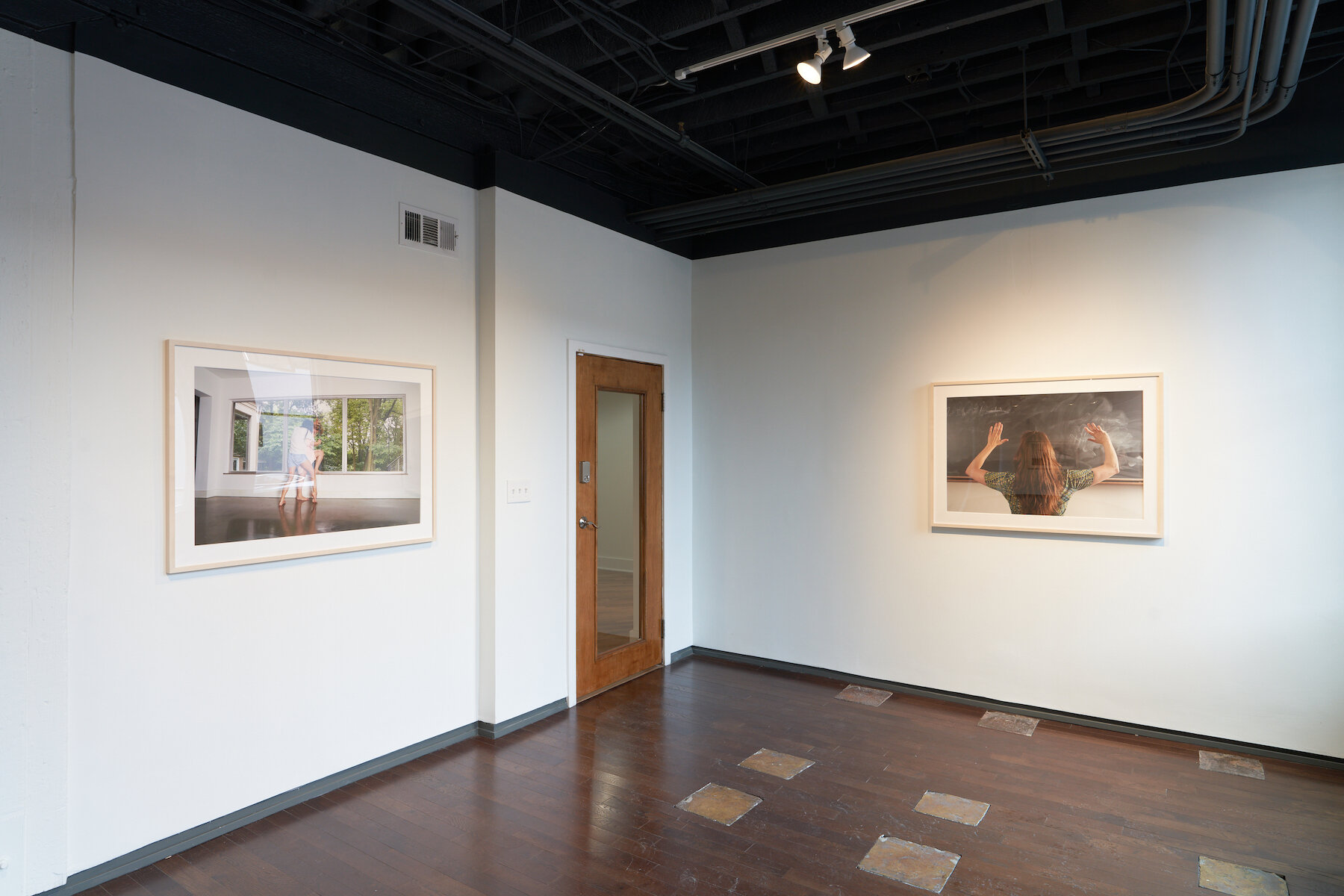Zoom Talk with Curator Tyler Cann on Greater Columbus Exhibition at Columbus Museum of Art
Zoom Talk with Laura Larson and Suzanne Silver on Return to Sender collaboration
Installation of Greater Columbus at Columbus Museum of Art
Left to right: Augustine’s Escape; Genevieve’s Escape, Part 1; Genevieve’s Escape, Part 2
Left to right: Augustine’s Escape; Genevieve’s Escape, Part 1
Genevieve’s Escape, Part 2
Installation views of Return to Sender at Columbus Printed Arts Center
Laura Larson + Suzanne Silver
November 19, 2020 - February 21, 2021
Return to Sender emerged through a collaborative mail exchange between Larson and Silver that began in the early months of the COVID-19 stay-at-home order in Ohio. Each artist would make a work in reply to one received. From this looping call and response, a collection of small works grew—a living document of the pandemic embodying the experiences of loss, sorrow, vulnerability, and rage. This exchange acts as the generative center of the exhibition. Every two weeks, the artists will take turns re-installing the show: adding and subtracting works produced through their correspondence and creating new ones in response to the developing relationships in the gallery.
For more Information: https://www.columbusprintedarts.org/return-to-sender
hole wound prick pierce gash
Their hands all over each other
View of Sky Wounds
Fill, Suzanne Silver
View of Sky Wounds
Suzanne Silver work in foreground
View of Portals
Memorials (bottom left), Suzanne Silver
Portals
Memorials, Suzanne Silver
All the Women I Know Zoom performance for Hoosac Institute, December 2
The Hoosac Institute presents ESCAPE an occasional event series.
December 2
8pm ET/5pm PT
A performance by Laura Larson, Christine Hume, and others. Based on Hume and Larson’s collaborative text and image book, All the Women I Know will stage a collective of women in the act of resisting.
To register for the Zoom event: https://us02web.zoom.us/webinar/register/WN_6g6IufwKRV2bVuvBFvZedA
For archived video of the event: https://hoosacinstitute.com/EVENTS
Sign up for Hoosac’s mailing list at https://hoosacinstitute.com/ at the bottom left of the home page.
Return to Sender at Columbus Printed Arts Center
Laura Larson + Suzanne Silver
November 19, 2020 - February 21, 2021
Return to Sender emerged through a collaborative mail exchange between Larson and Silver that began in the early months of the COVID-19 stay-at-home order in Ohio. Each artist would make a work in reply to one received. From this looping call and response, a collection of small works grew—a living document of the pandemic embodying the experiences of loss, sorrow, vulnerability, and rage. This exchange acts as the generative center of the exhibition. Every two weeks, the artists will take turns re-installing the show: adding and subtracting works produced through their correspondence and creating new ones in response to the developing relationships in the gallery.
For more Information: https://www.columbusprintedarts.org/return-to-sender
Greater Columbus exhibition at Columbus Museum of Art
Greater Columbus: The 2020 Greater Columbus Arts Council Visual Arts Awards Exhibition
November 6, 2020 – April 25, 2021
Presented biannually from this year, Greater Columbus features work by outstanding artists based in central Ohio. The exhibition represents a partnership between the Columbus Museum of Art and the Greater Columbus Arts Council.
The protagonists of Laura Larson’s City of Incurable Women are depicted in a series of enigmatic escapes. These fugitives—tenacious, exhausted, ambivalent—move nervously within the frame. Each woman looks away from the camera or conceals her face. Larson writes:
“I’m interested in how the body can telegraph the complex experiences of these women through gesture and the stories lurking behind these movements. How can the body allude to the private history of a consciousness? Of suffering? Of pleasure? How can it act as a screen for the social and political influences that shape lived experience? The project draws its inspiration from multiple sources: archival images of women treated for hysteria, nineteenth-century hidden mother photographs, documentation of the Judson Group’s dance performances, photographs of political protest. Collapsing documentary realism and directorial artifice, my process reflects the strategy of looking between the visible—the historical—and the speculative.”
For more information: https://www.columbusmuseum.org/greater-columbus-the-2020-greater-columbus-arts-council-visual-arts-exhibition/
Essay on Adrian Piper's "Food for the Spirit" on Black One Shot
I wrote a short essay about Adrian Piper’s photo series, Food for the Spirit, for Black One Shot published by ASAP Journal.
Black One Shot stages brevity and precision in response to the art of blackness, contemporary and/or prescient. At 1000 words a pop, these pieces divest from academic respectability to inhabit the speculative, ambivalent, irreconcilable ways of black forms, and move through the fires this time. Seditiously, we are object forward, conjuring up the necessary intimacy generated between a critic and their object and keyed to the channels and frequencies of blackness. We hold fast to the given/taken works, the cultural productions without reduction, the condition of knowing all-too-well, and the imagining of something otherwise. Object love in the time of pandemics and insurrections. Editors Lisa Uddin and Michael Boyce Gillespie
I rigged up a camera and tape recorder next to [a] mirror, so that every time the fear of losing myself overtook me and drove me to the ‘reality check’ of the mirror, I was able to both record my physical appearance objectively and also record myself on tape repeating the passage in Critique that was currently driving me to self-transcendence.
Food for the Spirit documents a season of Adrian Piper’s young life stripped down to her reflection in the mirror. The series of photographs was produced during a self-imposed isolation in the summer of 1971 in New York City when she immersed herself in Immanuel Kant’s text on metaphysics, Critique of Pure Reason (1781). By her account, her studies, coupled with an intense practice of fasting and yoga, brought her to a brink of disassociation.
A photograph of a black woman in a darkened room made in a darkroom. Food for the Spirit invites us to look carefully at the terms of how a photograph comes to life. In this intimately scaled print, Piper appears before the mirror nude from the waist up. Her gaze meets itself and she holds the camera directly below her breasts with her fingers softly pointing down in a gesture of grounding. Her flat affect withholds the disclosure of identity often assumed in the act of making a self-portrait. Details about the room emerge and recede: the Xs of the security gate slash the hexagonal web of safety glass, a wall of books on the far wall of the room, the soft flare of light made by a bare bulb ceiling fixture at the top of the frame. Across the series, her figure remains fixed in the center with only slight shifts in framing as she performs her photographic ritual, an accrued testimony that counters the silence and vulnerability of her body. From a distance, a grouping of these prints read as a succession of dark gray squares, shading into black. The images yield Piper’s figure and the subtle details of the scene as the viewer gets closer to peer into them. She surfaces in the image, one and the same with the grain of the print, yet her appearance is not a mirage. Light renders blackness not as shadow but as the very material of representation itself, rich with detail. In another work from the series, her dress dissolves into the inky well of the room; she continues to look back at herself. Barely illuminated, her ritual traces her adamant and enduring presence in the space.
What can and can’t be seen in this photograph? The photographs in this series are, by the technical playbook, poorly made—the film is underexposed, the prints are muddy and lack detail, and the framing is standoffish. An underexposed film negative will yield a print with coarse grain, reduced tonal range, and collapsed depth of field, all of which undermine the photographic claim to transparency. The playbook is a script of mastery—how to control the light, how to craft the illusion of deep space. The presumed transparency of the medium is at the heart of John Szarkowski’s notion that photography functions either as a mirror or a window, that photographs position the viewer to look out into the world or into the soul of the artist.2 In troubling this formulation, Food for the Spirit performs a ‘reality check’ on the medium’s claims to objective representation. What’s lost in an underexposed film photograph is detail in the shadow and Piper’s photographs are all shadow.
Without the illusion of depth in these scenes, our attention rests on the surface of the print and how Piper’s body is one and the same with the space. The paper and the image bleed into one another. Piper eschews the window into her consciousness, the gloss of understanding, for a more complicated tangle with the self-portrait, a term I will use in a provisional sense here. There is no window or mirror. We are witnessing a private ritual that refuses to disclose character or personality but rather insists, I am here. She insists on the physical reality of her body and the photograph itself as a material form. In her master-less handling of film, Piper asserts her racialized and gendered presence squarely in the frame.
In the 1970s, Kodak developed the Shirley card, a reference tool designed for calibrating skin tone in color printing. The cards featured portraits of white women, centering white skin tones and identity as the norm of color balance and optimal visibility. Piper’s figure is the antithesis of the Shirleys. In the repeated presentation of her body to the mirror/camera, she complicates the relationship between identity and visual representation with her canny use of analog film textures. The photographs cast the question of legibility—how we see her, a light-skinned black woman—onto a consideration of the materials themselves. Piper’s impulse to moor herself as an image doubles as a refusal to surrender the self to image and the terms of the materials’ inherent bias. There is a no wrapped up in her repetition of I am here. The silence of photography becomes an apt and resonant space to stage the dissociative conditions of black life that insist on both visibility and the threat of disappearance.
the fear of losing myself
She is looking at herself and she’s looking at us. She is a body and a spirit and she’s an image. She is an image which is not a transcendent self. I imagine the time between the split seconds of these photographs and the swell of her consciousness. I imagine her interior life that can’t be photographed.
The Hoosac Institute
I have a short essay in Journal 5 of the wonderful Hoosac Institute. It’s about a research trip I made with my friend and collaborator, Maud Casey.
https://hoosacinstitute.com/Laura-Larson
Zoom conversation with Jennifer Lange on "City of Incurable Women"
Jennifer Lange and I discuss my exhibition at Contemporary Art Matters via Zoom. The exhibition includes selections from two projects, City of Incurable Women and All the Women I Know. https://www.youtube.com/watch?v=ecevy0HhKgs
10×10 Photobooks #INSTAsalons--Laura Larson and Hidden Mother
Please join me on Sunday, April 5 at 1:00 for 10×10 Photobooks #INSTAsalons. I will discuss Hidden Mother and All the Women I Know on this live-streaming book salon.
Homebound with cabin fever?
Tune-in to 10×10’s new #INSTAsalons to watch LIVE presentations from photographers, publishers, bookshop owners and others in the photobook community.
Each salon lasts approximately 40-55 minutes and allows for comments and questions. All #INSTAsalons remain available for 24 hours after the end of the salon on Instagram @10x10photobooks.
City of Incurable Women at Contemporary Art Matters
Installation views of the exhibition. The gallery conversation scheduled for March 29 has been cancelled. Stay tuned for news of a reformatted artist talk.
City of Incurable Women opens February 20 at Contemporary Art Matters
Instance #7 of Season 2: Follow the Mud Beeler Gallery at CCAD
A selection of prints from All the Women I Know is included in the most recent installation of Season 2: Follow the Mud.
“Second shelf, initiated in 2018 by Brussels-based German artist Heide Hinrichs, is a collaborative book acquisition project and multi-institutional, international effort to increase library holdings of publications by non-binary, female, and queer artists and artists of color. At the project’s core is the formation of a new collection of books in the library of the Royal Academy of Fine Arts, Antwerp, and simultaneously acquired through Beeler Gallery at Columbus College of Art & Design’s initiative with Packard Library, and at University of Bristol, United Kingdom.
As part of Season Two: Follow the Mud, Heide Hinrichs installs more than 100 drawings, Inscriptions (2006–2020), based on drawings by artists in second shelf: Anni Albers, Lutz Bacher, Silvia Bächli, Louise Bourgeois, Andrea Büttner, Ulises Carrión, Hanne Darboven, Mirtha Dermisache, Ulrike Grossarth, Eva Hesse, Hilma af Klint, Emma Kunz, Lee Lozano, Agnes Martin, Ana Mendieta, Ree Morton, Meret Oppenheim, Lygia Pape, Lily van der Stokker, Paul Thek, Cecilia Vicuña, Annette Weisser, and Rachel Whiteread. In dialogue with these drawings is a selection of Columbus artist Laura Larson‘s photographic series All the Women I Know. Larson’s book Hidden Mother (Saint Lucy Press, 2017) is part of second shelf.”
For more info on second shelf, please visit www.second-shelf.org
Greater Columbus Arts Council 2019 Visual Arts Fellowship
The Greater Columbus Arts Council (Arts Council) and the Columbus Museum of Art (CMA) are pleased to announce the recipients of the 2019 Visual Arts Fellowship awards.
The 2019 Visual Arts Fellowship, chosen from 86 applicants, are: Christopher Burk, Nathan Gorgen and Molly Jo Burke (collaborative application), Nick Larsen and Laura Larson.
Each Fellowship recipient will receive a $5,000 cash award and be featured in an exhibition hosted by the Columbus Museum of Art in 2020.
The 2019 Visual Arts Fellowships were juried in a blind review process by Gianna Commito, Professor of Painting at Kent State University; Courtenay Finn, Chief Curator at moCa in Cleveland; and Gilbert Vicario, The Selig Family Chief Curator at the Phoenix Art Museum.












